Consumer Reports (CR) has once again sounded the alarm about protein powder safety – this time in their October 2025 write-up. They said that many popular protein powders contain potentially dangerous amounts of lead and other heavy metals. If that sounds familiar, it’s because this isn’t the first time…
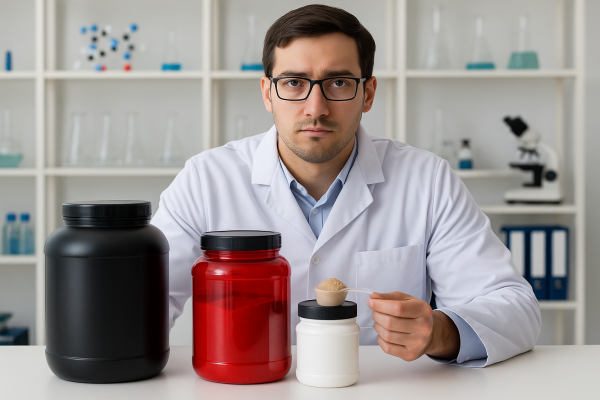
Back in 2010, CR published a similar exposé that sparked headlines, confusion, and panic across the fitness world. Fifteen years later, not much has changed, except for a few things:
1. Today the protein market is ten times bigger.
2. The news travels a lot faster because of social media.
3. One particular category of protein powder appears to be truly problematic.
What’s also different today is how deeply protein has worked its way into everything – not just tubs and bars, but cereals, bread, pancakes and all kinds of snacks, like protein chips, doughnuts and cookies. So when a watchdog group like CR revisits this issue, it’s now amplified in a much noisier, protein-obsessed world.
That said, panicking and quitting protein powder altogether is not necessary. Let’s break this down like adults and interpret it with some science and common sense.
What Consumer Reports Actually Found
CR tested 23 protein powders and ready-to-drink protein shakes in their investigation. Two-thirds of them exceeded what they called their “level of concern” for lead in just a single serving. They also measured cadmium, arsenic, and mercury, but lead was the main focus.
Now, before you freak out, here’s an important point: CR used California’s Prop 65 as their yardstick – that’s 0.5 micrograms of lead per day. It’s one of the strictest limits in the world and designed mainly to trigger product warning labels – especially for potential reproductive harm – not to define a toxic dose.
However, the FDA hasn’t set enforceable limits for heavy metals in protein powders. What the FDA does have are general “interim reference levels” for total daily exposure to lead: 8.8 micrograms per day for adults and women of childbearing age. So CR’s benchmark is extremely conservative – about 18 times lower than the current FDA guideline.
Concern For Science Or Bias Against Protein?
While I appreciate CR’s concern for consumer-protection, the article – written by an investigative journalist, not a scientist – takes a predictable turn: it suggests that most people are eating too much protein and “don’t need protein supplements” at all – quoting the government’s RDA of 0.8 grams per kilogram of body weight as if that’s the gold standard.
That’s a classic misunderstanding. The RDA is the minimum to prevent deficiency in sedentary adults – not the optimal intake for anyone who trains, diets, or wants to build or maintain muscle.
For active people, the evidence is crystal clear: the sweet spot for performance and body composition is around 1.6 grams per kilogram per day, and the well-established range in the bodybuilding community is 1.6 to 2.2 g/kg/day.
So when CR tells readers, “You probably don’t need that much,” they’re technically right for couch potatoes. But they’re completely off the mark for lifters, athletes, or anyone serious about preserving lean mass during a diet.
Ironically, that kind of commentary ends up sounding less like an evidence-based safety warning and more like a subtle slam on protein supplements in general. The real issue isn’t “too much protein.” The real issue is quality control – making sure the products we use are tested and clean.
[Side note: I don’t mean to knock CR completely – their findings on plant proteins really are concerning – but on this protein subject I can’t help myself: They also said that peanut butter is a high protein food. Ooof].
The Main Culprit: Lead In Plant-Based Protein Powders
Here’s another key detail that often gets lost in translation (the way media reports it and the way people take it):
The products flagged as highest risk were vegan or plant-based proteins – mostly pea and rice blends. Why? Because plants pull heavy metals from the soil, and some soils (and cocoa flavorings) are naturally higher in these metals.
If you’re vegan, that doesn’t mean you should panic. It just means you need to choose your brand carefully and it’s probably a good idea not to rely on powder multiple times a day. That’s something I’ve never recommended anyway.
Whole foods should always be your foundation and make up the majority of your calories. Protein supplements are just that – supplements – meant for convenience (or often for me, as an ingredient in certain recipes).
Ready-to-Drink Shakes and Whey Powders
The ready-to-drink (RTD) protein shakes – the ones that come in tetra-paks – did show some metals, but these products look even less worrisome. Still, if you’re drinking them daily, it wouldn’t hurt to check whether your favorite brand has made a statement or published testing results. A little transparency would go a long way.
As for whey-based powders, which I know a lot of my readers use, many of those tested fine – well below any threshold of concern and listed by CR as “OK for daily use” even by their standards.
The Bigger Picture: Heavy Metals Are Everywhere
The bigger truth that gets lost in the protein panic is this: heavy metals are everywhere in the food supply.
• Rice naturally contains arsenic.
• Tuna, especially canned albacore, accumulates mercury – the most neurotoxic form, methylmercury.
• Chocolate and cocoa products can contain cadmium.
In addition, heavy metal exposure can come through drinking water (including through old plumbing), and even from places like old paint chips.
So when you hear that there’s a trace of lead in a protein powder, it doesn’t automatically make it “dangerous.” It comes down to how much you’re exposed to and how often. Always remember the core scientific principle: “It’s the dose makes the poison.”
A lot of people forget this, and in many different contexts. (Like a little bit of sugar is “poison” – NO, it’s not).
The major danger would come from excessive, cumulative exposure – for example, using three shakes a day every day without checking to see if the supplement company has tested their product, plus eating a lot of other foods that also contain trace metals.
By the way, anyone remember back in the 90s when bodybuilding gurus – who conveniently owned supplement companies – told people to “Eat three meals and drink three of my shakes every day? Yeah, not great advice (expensive too).
Why Mercury In Tuna Might Be a Bigger Concern
Ironically, the bodybuilding world used to have another metal problem of its own – but it was mercury instead of lead. Guys were eating canned tuna multiple times a day – or even doing the infamous (nothing but) “tuna and water” diet. Not smart.
Albacore (white) tuna is a larger predatory fish, so it accumulates more methylmercury. That’s why health authorities have issued clear consumption limits for tuna. Meanwhile, with protein powders, there aren’t official government limits yet – which is probably one reason CR keeps testing and raising alarms.
So, if you’re comparing risks, I’d actually say tuna might pose an equal or even greater concern for regular consumers than heavy metals in protein powder. The difference is, with tuna, we have guidelines from health authorities like the FDA and EPA. With protein powders, we mostly have watchdog groups and voluntary testing.
How to Use Protein Powder Safely (and Sanely)
If you’re using protein supplements regularly, here’s a sensible approach:
1. Don’t overuse any single product.
Rotating protein sources is smart for both nutrient variety and toxin risk reduction. That means using protein powder more like once a day – not three times – and mixing up your protein sources through the week.
2. Favor tested and certified brands.
Look for NSF Certified for Sport, Informed Choice, or USP Verified labels. These programs test for contaminants like heavy metals and ensure manufacturing quality.
3. Choose lower-risk varieties.
Whey isolate, whey concentrate, and egg white powders typically test lower than plant blends. If you prefer plant-based, look for brands that publish independent third-party lab testing showing metal levels per serving – not just internal testing from the manufacturer.
4. Watch the flavor.
Chocolate-flavored powders often contain more cadmium because cocoa naturally holds more of it. If you use protein daily, consider switching to vanilla or unflavored versions now and then.
5. Be extra cautious if pregnant or nursing.
This is where CR’s conservative thresholds make sense. For these populations, even trace heavy metal exposure adds up more significantly.
6. Remember the purpose of protein supplements.
Supplements are meant to fill gaps, not to replace food. If you can meet your protein target with whole foods like eggs, dairy, poultry, lean meat, or Greek yogurt, that’s ideal. Save shakes for convenience, making recipes, and hitting protein goals if you have trouble with that.
7. Don’t make protein powder the scapegoat
Just because a few protein powders tested higher for trace metals doesn’t mean all powders are bad or unsafe. It simply means protein has become an easy target whenever a report like this makes headlines. The truth is, heavy metals exist in nature and show up in many foods – from rice to spinach to tuna – so the goal isn’t to single out protein supplements, it’s to stay informed and make balanced choices.
The Bottom Line On Protein Powder Safety
On one hand, I don’t think the publication of this report is fearmongering or baiting for clicks. There are potential legitimate concerns about protein powder contamination. On the other hand, there’s no reason to turn this into another internet panic that goes viral. I’ve already seen friends on social media say that they threw out their protein powder.
Yes, some protein powders contain trace amounts of heavy metals, and a couple of plant protein powders have now been red flagged. But that doesn’t mean you need to stop using all protein supplements or fear every scoop. It just means you should stay aware, choose reputable brands, and use supplements the way they were intended – to complement a diet that’s already based on whole foods.
-Tom Venuto, Author of
Burn the Fat, Feed the Muscle
Burn The Fat Guide To Meal Prep For Fat Loss
NEW! EXTREME FAT LOSS: Controversial Diet And Training Tactics Exposed

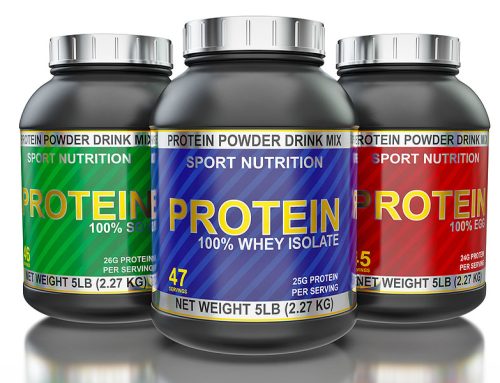
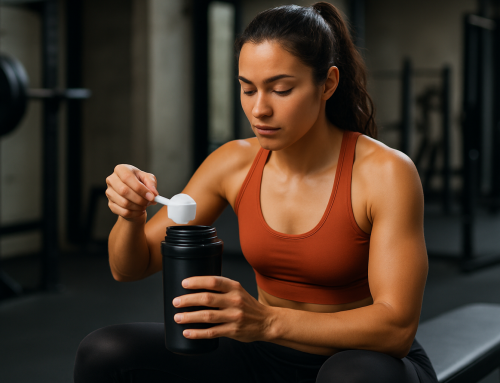
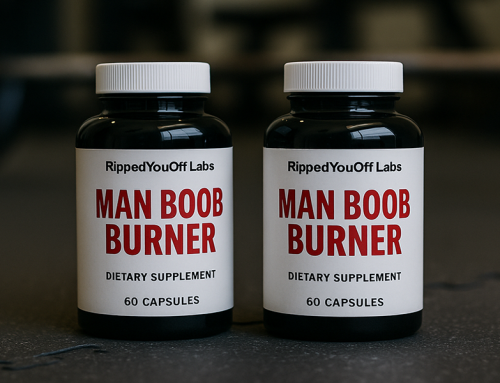

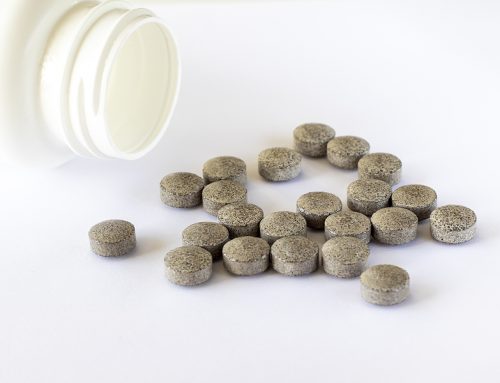
Leave A Comment